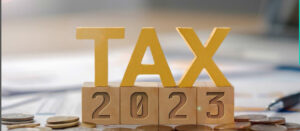An analysis of the proposed tax measures outlined in the draft Medium-Term Revenue Strategy


In the wake of economic challenges and declining domestic revenues, the National Treasury has unveiled an ambitious Medium-Term Revenue Strategy (MTRS) that promises to reshape the country’s tax landscape. The MTRS not only seeks to enhance revenue administration efficiency but also aims to foster economic transformation through the Bottom-up Economic Transformation Agenda (BETA). Set to span from the financial year 2024/25 to FY 2026/27, this strategy is poised to spark lots of debate among taxpayers.
Income Tax Reforms: A Mixed Bag
One of the key highlights of the MTRS involves lowering the current corporate income tax (CIT) rate from 30% to 25%. According to the MTRS, this adjustment aims to bring Kenya’s CIT rate in line with global averages, which could potentially make the country more appealing to foreign direct investments. Additionally, this change is expected to discourage tax planning and promote better compliance among taxpayers.
On the other hand, a contentious proposal involves the potential reintroduction of minimum tax, albeit with adjustments to address the court’s concerns from its previous version. Previously, minimum tax faced legal challenges because it imposed a tax on gross turnover, regardless of whether a business was profitable or incurring losses, while income tax traditionally applies to income only. The courts declared the minimum tax as unconstitutional. The decisions made by the High Court and Court of Appeal offered much-needed clarity regarding the applicability of minimum tax to businesses that were not generating profits in Kenya. It will be intriguing to observe how the government plans to redesign and reintroduce this tax in light of the court’s rulings.
The MTRS also addresses personal income tax, aiming to revise the tax band structure to make it more progressive and align the highest personal income tax rate with the CIT rate. The existing tax bands, which were introduced by the Finance Act of 2023, span from 10% to 35%. Critics argue that this structure lacks the necessary breadth to provide adequate support to individuals with lower incomes and creates opportunities for tax avoidance and evasion. Nevertheless, this proposal raises concerns regarding the principles of tax predictability and certainty given the recent introduction of the tax bands.
But the strategy goes beyond that; it aims to remove tax reliefs that are considered counterproductive, including those associated with personal, insurance, medical, and housing expenses. In a period when most employed Kenyans are already feeling the financial strain due to higher statutory deductions from their salaries, this proposition is likely to attract substantial criticism.
VAT Adjustments: Striking a Balance
Value Added Tax (VAT) will undergo several changes. The current VAT registration threshold of Ksh. 5 million is set for a much-needed upward revision due to inflation’s erosion. This move aims to ease compliance burdens on small businesses, although voluntary registration will continue.
The majority of East African Community (EAC) member states have set their VAT rate at 18 percent, whereas Kenya currently levies a 16 percent VAT. The Strategy suggests reconsidering Kenya’s VAT rate to match the EAC rate. If this change is put into effect, it is likely to escalate the cost of living, as the prices of goods and services would rise due to the higher tax rate.
The proposed inclusion of VAT on specific services that are not directly related to education, such as swimming activities offered by schools, has sparked a significant debate. This particular proposal is highly disputed, mainly because the prevailing competence-based curriculum (CBC) promotes extracurricular activities like sports. In fact, swimming is now considered a crucial life skill subject under CBC and is meant to be taught in all schools. Therefore, to claim that this activity is not directly related to education comes as a surprise.
Excise Duty: Health Concerns
Aligning alcohol taxation based on alcohol content and raising excise duty on spirits and high-alcohol products aims to reduce consumption and address health risks. Nevertheless, it’s crucial to strike a delicate balance between public health priorities and economic considerations. There is a significant risk of imposing excessive taxes on legitimate players in the alcohol industry, which could, in turn, be transferred to consumers. Given the diminishing purchasing power resulting from the current high cost of living, it is likely that many consumers will resort to cheaper illicit products. This, in turn, could lead to loss of government tax revenue and exacerbate the consumption of illicit alcohol, which carries adverse health consequences.
Customs Duty and Other Measures: Regional Alignment and Wealth Tax
In a bid for regional alignment, Kenya will engage with other EAC states to restructure the EAC Common External Tariff (CET). This aims to create uniform duty rates for imported goods and offer duty-free access for primary raw materials and inputs.
Introducing a motor vehicle circulation tax as a form of wealth tax is another novel and contentious proposal. This annual tax, payable alongside motor vehicle insurance, will vary based on engine capacity, stirring discussions about its fairness and impact on vehicle owners.
Balancing Act: Public Input Crucial
While the MTRS promises reforms that can potentially boost tax revenue, the devil lies in the details and implementation. The government must strike a delicate balance between revenue generation and the potential burden on taxpayers, particularly in these challenging economic times.
With submissions and comments invited until October 6, 2023, taxpayers and other stakeholders have a crucial role to play in shaping the tax reforms that will determine the country’s economic future. The outcome of these deliberations will impact the nation’s fiscal landscape and the everyday lives of its people.

